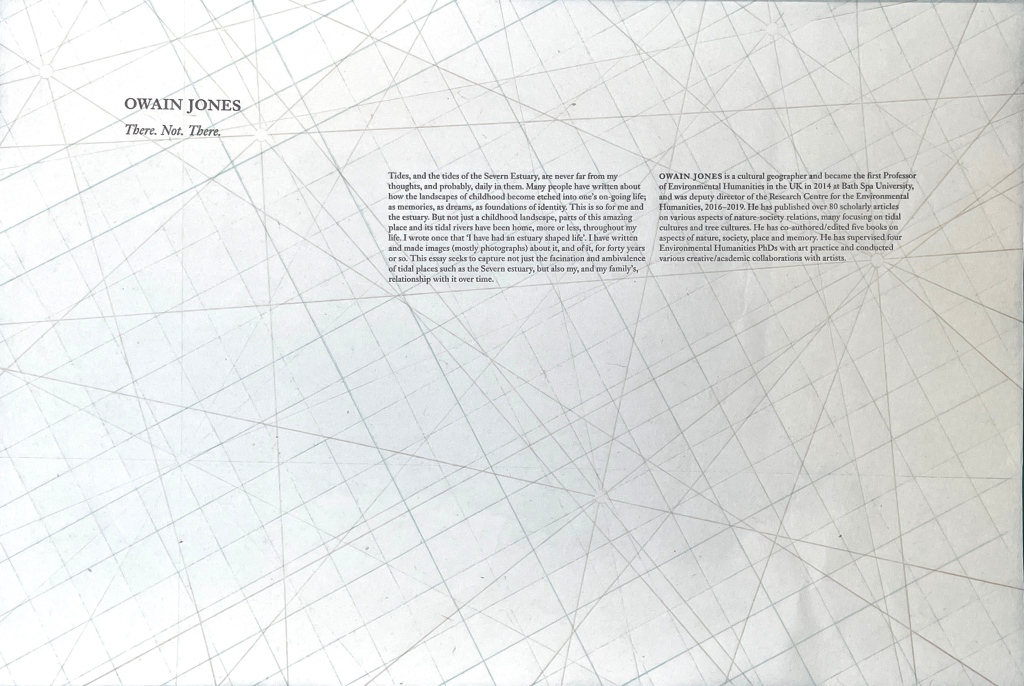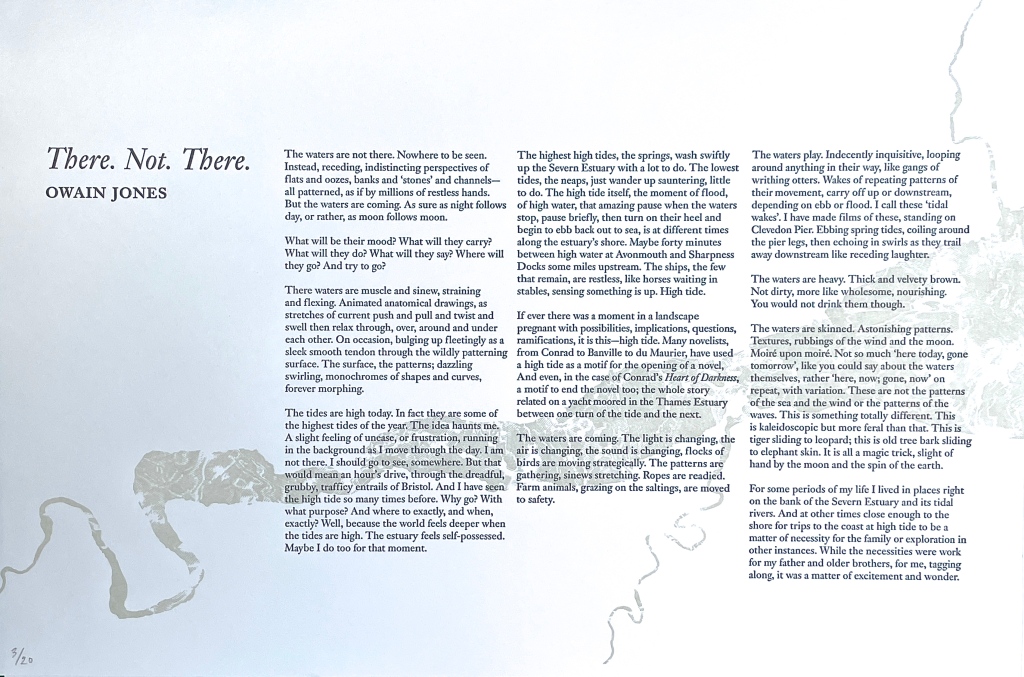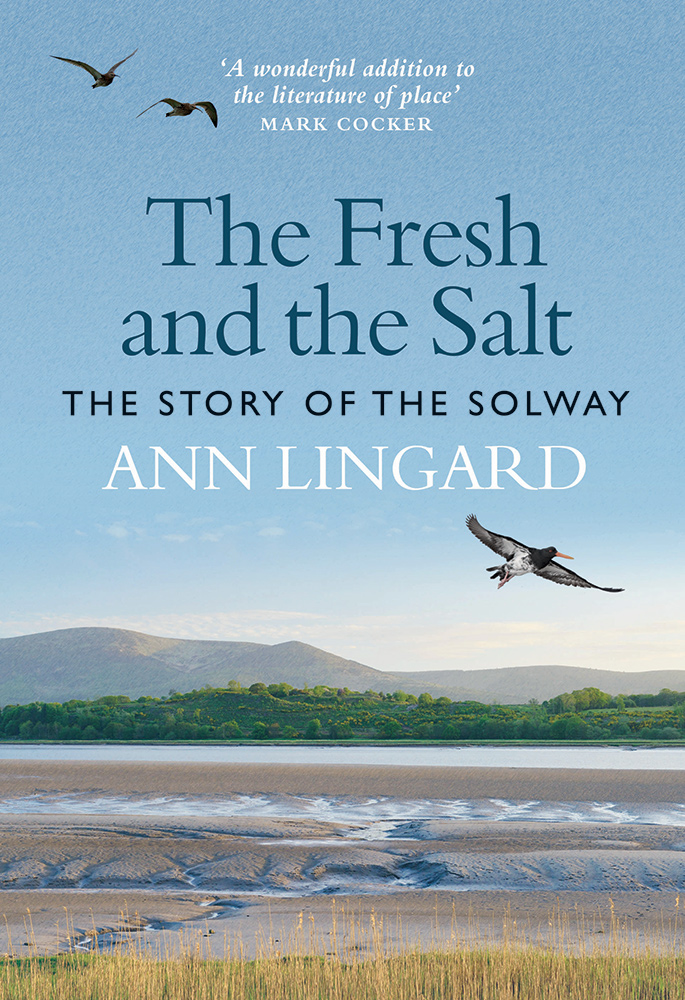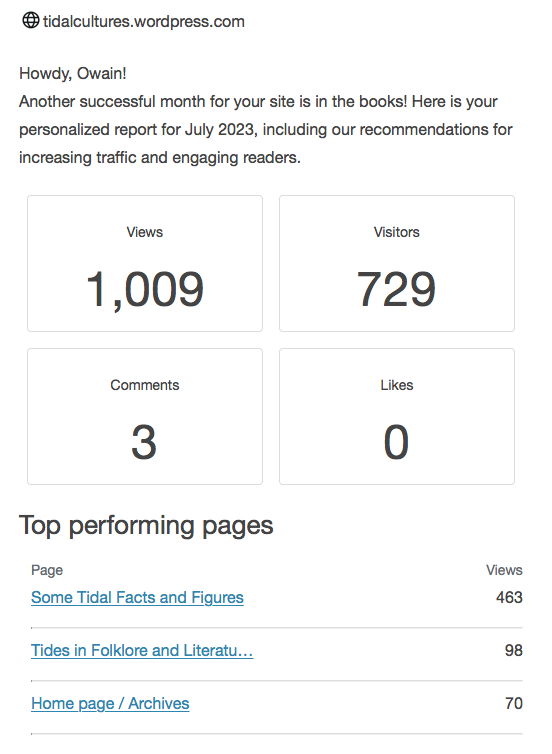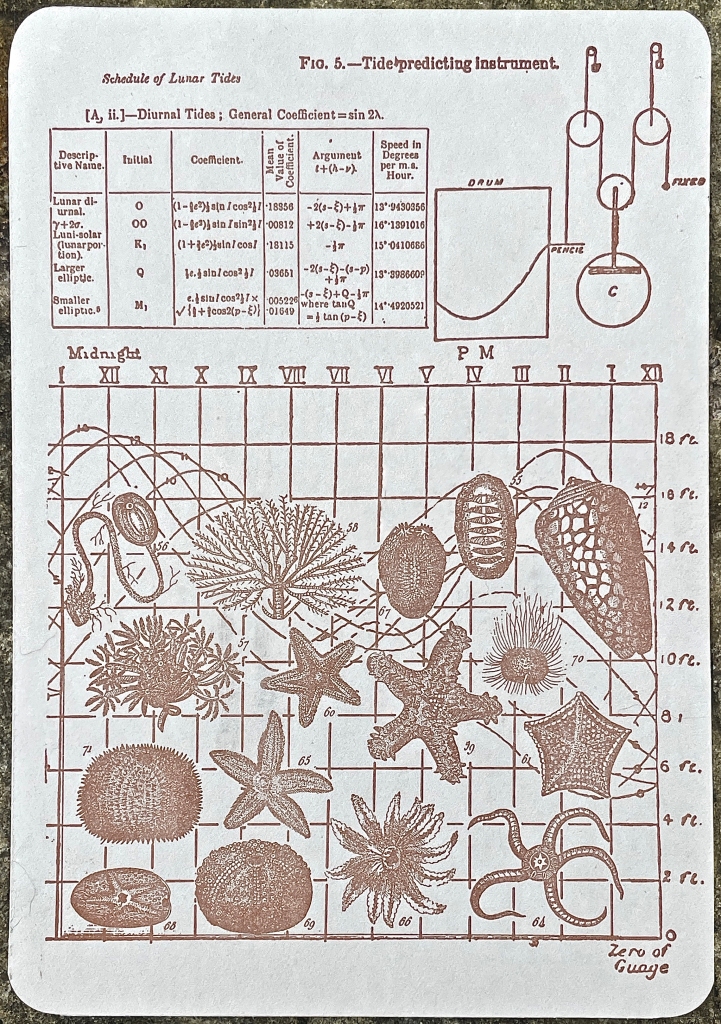
Mid/upper Severn Estuary – low tide.
Introduction.
This blog is about tidal cultures. These are the amazing natural and cultural ecologies that are shaped and entangled by tidal rise and fall at the margins of the oceans. Tidal cultures are present in all coastal landscapes where tides rise and fall. They are particularly rich in highly dynamic tidal landscapes such as estuaries, where tides can raise the sea level many metres in a matter of hours and then lower it again. Often huge areas of inter-tidal land are repeatedly exposed and then inundated through this process. Tidal cultures are thus cultures of the coast, of where the margin between land and sea is always on the move. Tides are some of the most powerful forces on Earth, and, as well as constantly changing the sea level, create powerful currents and other oceanic processes which also shape ecology, culture and economy. Tides, and therefore tidal cultures, have complex daily, monthly, and seasonal cycles driven mostly by the gravitational relationship between the earth, sun and, most importantly, the moon. Other forces and factors also affect tidal prcoesses and rhythms, such as the spin on the earth, and the varying geomorphology of coasts around the world.
A longer description of my life with tides can be found here.
Research and Writing About Tides, Coasts and Estuaries
I am available for frelance journalism, media comment and research about, tides, coasts, estuaries, and tidal cultures in the UK and beyond. Particulalry in the context of climate change and sea level rise which pose huge challenges to coasts, estuaries and wetlands, in the UK and around the world in the coming decades. Please email me at owain.oj(at)btinternet.com, or call / message 07871 572969.
Collaberations.
Through my academic work on tides and estuaries, and through this blog, I have been luckyenough to collaborate with a number of artists / scholars on various talks, papers and projects. These ipeople nclude; Simon Read; Linda Cracknell; Bettina Van Hoven; Louisa Fairclough; Antony Lyons; Davina Kirkpatrick; Natasha Barker; and Michela Palmer.
I am currently undertaking a substantial collaboration with Heather Green of Arizona State University on a project entitled Tidal Timespace. See here.
Blog Content.
Posts.
The blog now consists of over 150 posts which are updates and links to tidal cultural news and points of interest. Pleasse scroll down to browse, or search for any key words you are interested in.
The fisrt post (bottom) – https://tidalcultures.wordpress.com/2013/04/02/tidal-cultures/ – tells of the research exchange grant that funded the initial project which this blog emerged from.
Pages.
There are 26 pages in all. These contain a lot of varied material including more details of the funded resreach project and the research exchange workhops that were held in the UK and the Netherlands, and various writings by me and others. Please note some pages are grouped and appear in dropdown lists from their parent page.
The main pages of the blog are:
Tidel Related Artworks. This lists over 100 artworks from around the world which are related to tides. This does not include paintings and drawings (there would be many thousands) but lists sculptures, perfomances, films and installations which are inspired by, or connected to, tidal ride and fall in places all around the world. Each entry has a link where possible.
Tidal Glossary. This lists over 150 words and phrases connected to tidal porcesses and places. Many of these are old, local, and/or traditional terms. The glossary leans towards a more poetic that scientific view. There being many technical, scientific terms relating to tides that are not included.
Non-Fiction Books About Tides and Tidal Places. This lists more than 50 non-fiction books which discuss tides, tidal processes, places and histories. Each entry has a link where possible.
Other key pages
The World’s Highest Tides. And Some Other Tidal Facts and Figures
Papers, Talks and Other Output On Tides by Owain, sometimes with others.
Blog Roll (Right hand column). This is a list of links to other websites relating to tides and tidal culture in some or other way.
About The Author; Professor Owain Jones.
I grew up on a farm near the Severn Estuary (UK). Since then I have lived in places near the estuary all my life. This sparked my interest in tides.
I gained an MSc (Society and Space) and PhD in Cultural Geography at the world leading Department of Geography, University of Bristol; 1993-1997. I then conducted post-doctoral research at Bristol, Exeter, and Open Universities, and other institutions. In series of RCUK (now UKRI) funded projects, I worked upon many aspects of nature-society relations; landscape, place and memory; the environmental crisis; children’s geographies; theories of pragmatism and non-representation. I have conducted research projects on water and society (floods, tides, coastal cultures, water and community; on trees, place and landscape; and children, nature and place. I led a £1.5 million Arts and Humanities Research Council Connected Communities project which involves eight UK universities, and numerous community partners and artists in four case study areas across the UK. This project sought to creatively explore and transform connections within and between communities, and communities and nature, in relation to water issues, inclsuing, in the Bristol case study, tides. I was appointed as the first Professor of Environmental Humanities in the UK in 2014 at Bath Spa University where I was deputy director of Research Centre for the Environmental Humanities. (2016 – 2019).
I have published/co-published over eighty scholarly articles. See Academia.edu for a list – many papers can be downloaded.
I have also published five books as a editor and/or co-author.
Pigott, A, Jones, O, Parry, B (Eds.) (2023) Art and Creativity in an Era of Ecocide: Embodiment, performance, practice, London: Bloomsbury.
Holt Y., Martin-Jones D., Jones O. (eds) (2018) Visual Culture in the Northern British Archipelago: Imagining Islands, London: Routledge.
Bastian M., Jones O., Moore N., Roe E. (eds) (2017) Participatory Research in More-than-Human Worlds, London: Routledge.
Jones O., and Garde-Hansen, J. (eds) (2012) Geography and Memory: Identity, Place and Becoming, Basingstoke: Palgrave Macmillan.
Jones O., and Cloke P. (2002) Tree Cultures: The Place of Trees, and Trees in their Place, Oxford: Berg.
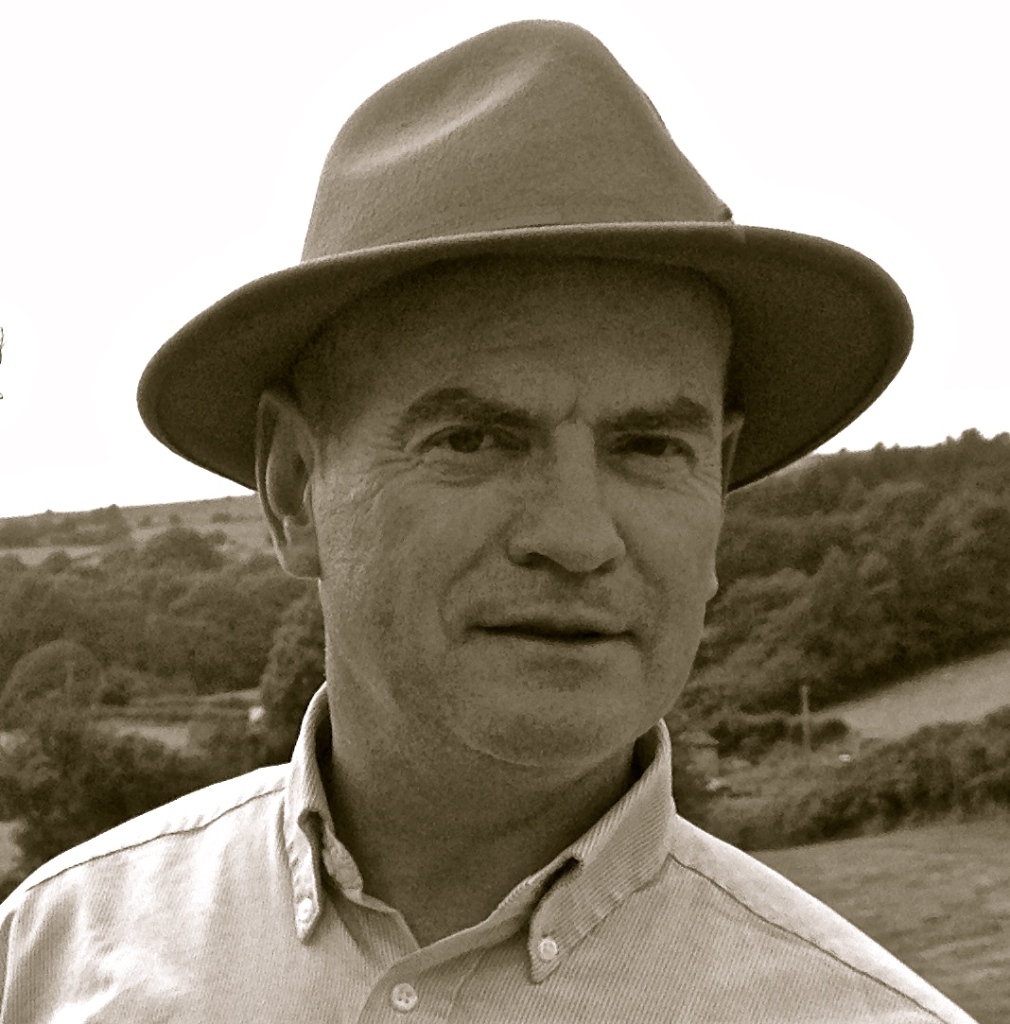
A list of all the blog pages as links
A (Poetic) Tidal Glossary
A Conversational Essay on Tides by Linda Cracknell and Owain Jones
About this Blog And Contact Details
Cardiff’s Rivers and Coastline (a lament)
Detailed Aims and Objectives (of funded project)
Links to Tidal Films and Websites
Low Tide Walks
Managing Tidal Change: Natasha Barker Reports
Non-Fiction Books on Tides and Tidal Places
Overview of the Servern Estuary and its natural and cultural heritage (and list of refs)
Owain Jones on Tides: Introduction
Papers, Talks and Other Output
Picture Store and Maps
Severn Estuary Art Atlas (SEAA) and Wadden Sea Art Atlas (WSAA)
Severn Estuary Scouting Trip; Heather Green and Owain Jones; 9 – 15th January 2020
Simon Read on Tides
The World’s Highest Tides. And Some Other Tidal Facts and Figures
Tide Related Art Works
Tides in Folklore and Literature
Tides in Poetry
Tides in Songs
Views of the Wadden Sea
Workshop 1. “Getting to know you…”
Workshop 2: “Emotional Geographies of the coast; island imaginings and mud walking!”
Workshop 3: “Deeper into the Servern landscape(s)”
Workshop 4: “Sense of Place, Terschelling”

